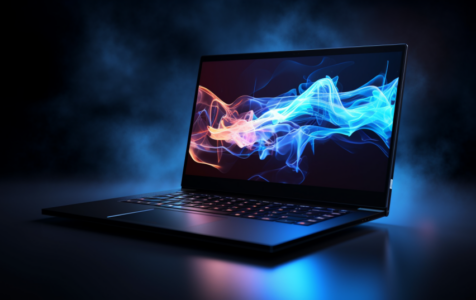When a Windows 10 system displays a black screen, common culprits include graphics driver issues, miscommunications after wake-up, recent Windows 10 updates, malfunctioning Windows Explorer, or faulty display connections. Before diving deeper, try these quick solutions. A simple reboot might work wonders, achievable by holding down the power button for ten seconds. For PCs, using the combination of the Windows logo key along with Ctrl + Shift + B can help wake up the screen. If you suspect Windows Explorer is the problem, use either Ctrl + Alt + Delete or Ctrl + Shift + Esc to bring up the Task Manager and restart Windows. Conducting a physical inspection is beneficial. Check all display connections first. If unsure, test with a different screen or an external GPU. Sometimes, the problem arises from the graphics component, which might require repair or replacement.
Expert Tip: For smoother PC performance, consider using a PC optimization tool. It handles junk files, incorrect settings, and harmful apps. Make sure it's right for your system, and always check the EULA and Privacy Policy.
Special offer. About Outbyte, uninstall instructions, EULA, Privacy Policy.
If the problem is software-related, consider booting in safe mode. In this mode, you can check the state of your display drivers in the Device Manager or even remove unnecessary third-party applications that might be causing the issue. A system restore is another powerful tool available in safe mode; this reverts your system to a previous, functioning state. If recent updates seem problematic, uninstall them. Additionally, accessing the BIOS/UEFI and selecting default settings can also resolve software-induced display issues. Display Driver Issues: Third-Party Applications: System Restore: BIOS/UEFI Utility: Startup Applications: Windows Update Rollback: During a Windows 10 installation, brief black screens might occur. If the screen remains black without activity for more than six hours, reconsider the installation procedure. Following these steps in sequence can help users troubleshoot their black screen issues systematically. If basic measures are unsuccessful, delve deeper. For situations where the cursor is visible but the desktop isn’t, consider restarting Windows Explorer. Booting in Safe Mode is another method to identify problems, especially by disabling startup items sequentially. A: Check system cables, scan for viruses, update drivers, start in safe mode, or use system restore. A: Potential reasons include damaged connections, faulty hardware, outdated software, or viruses. A: Loose cables, malfunctioning hardware, outdated drivers, or viruses might be responsible. A: Try using Ctrl + Alt + Delete, opening Task Manager, closing unresponsive programs, or restarting in safe mode. Please note: This information aims to be helpful and accurate, but we always encourage double-checking and exploring further insights for optimal results. For specialized advice tailored to your situation, consulting a professional is always a great idea. While we strive for accuracy, technology and software are constantly evolving. As such, features and methods may change over time.Quick Fixes
Software Fixes
Hardware Checks:
Common Causes
Basic Checks
Restarting Graphics Drivers
Monitor Troubleshooting
Initial System Checks
Software Related Solutions
Further Diagnostic Steps
Note
Preventative Measures:
Additional Troubleshooting Steps
FAQ
Q: How do you fix the black screen on a laptop with Windows 10?
Q: Why is my Windows 10 laptop showing a black screen?
Q: Why does my computer power on but the screen remains black?
Q:How can I exit black mode on my computer?
Disclamer
How to Fix Black Screen Issues in Windows 10

Key Takeaways
Free Scan for PC Issues
Compatible with:
Windows 10/11, Windows 7, Windows 8
Give us some love and rate our post!
[Total: 0 Average: 0]
Subscribe
0 Comments
Oldest